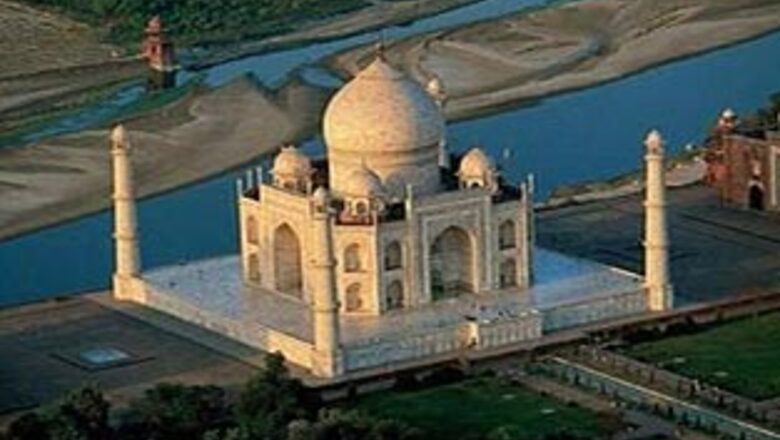
views
Agra: The Taj Mahal has been damaged by the 'beauty treatment' it received - application of Multani mitti (Fuller's earth). It has ended up disfiguring the white marble structure, say local residents.
Two years ago eminent historian R Nath had warned against mud pack therapy for the Taj. Now others confirm his apprehensions.
"The white patches are visible and the colour differentiation can be noticed by any discernible observer, because measures to contain dust particles have largely failed. There is no proper or modern equipment to clean up the monument. There is a shortage of manpower. It is an unplanned and haphazard kind of conservational effort," Shamsuddin, president of the Agra Guides Association, told IANS.
Fifteen years after the Supreme Court of India announced a set of measures to protect the Taj Mahal and nearby historical monuments from air pollution, they still remain at risk.
A slew of initiatives have been taken and millions of rupees have been spent. A natural gas pipeline has been laid to supply clean fuel to industries in Agra and Firozabad, diesel-run three-wheelers have been replaced by CNG-fuelled vehicles and heavy investments have been made in the Mathura refinery to reduce pollution.
But the ground realities haven't changed much, say the citizens of Agra. D K Joshi, a member of the committee set up by the apex court to see that its directives are carried out, says a lot has to be done before "one can say Agra has become environmentally safe for the Taj Mahal".
Increased commercialisation through tourism promotion is adversely affecting conversational efforts.
Due to the power shortage, thousands of diesel generators continue to run in the city, adding to the pollution load. The wood burning crematorium in the shadow of the Taj has not been shifted either. The green belt around the Taj has been slowly converted into commercial space with land allotted to hotels. All this is adding to the pollution pressure on the fragile structure.
Joshi said 19,000 saplings were planted in the Taj Nature Walk a few years ago, but not a single one has survived. "Five thousand were planted when (the then Pakistan president) Musharraf came; hardly any survive.
"Similarly the density of population had to be reduced around the Taj, but the population has increased to 3,50,000 today, with more vehicles and more waste heaps around the monument.
"Instead of clearing up population clusters, the Agra Development Authority has gone on a house building spree with Taj phase one, two and now three. Instead of trees you see only concrete structures all around the Taj Mahal," Joshi said.
"The city is more dusty, noisy, and ugly today than it was 30 years ago when the environmental crusade was first launched to secure the historical monuments from air pollution," says environmental engineer R K Gupta, who installed scores of pollution control equipment in the early 1990s to save Agra industries from being closed or shifted.



















Comments
0 comment